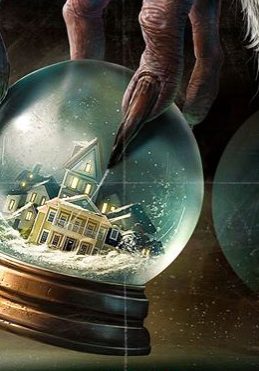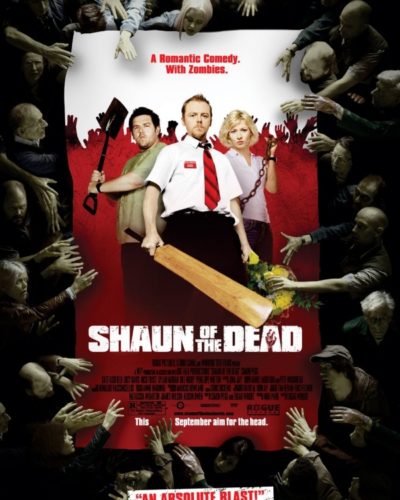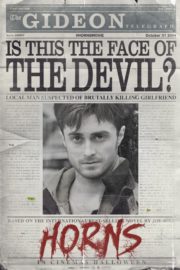Unwrapping Holiday Fear
“Santa Claus is coming to town… but so is something far worse.”
Released in 2015 and directed by Michael Dougherty, “Krampus” offers a fresh take on holiday horror films. This dark fantasy spins a tale where a family’s Christmas spirit is tested by a supernatural entity. When the dysfunctional Engel family shuns the joy of the season, they awaken Krampus, a demon who punishes those who have lost their holiday spirit. It’s a story that intertwines humor, horror, and the festive season into an exhilarating package.
Building the Horror Atmosphere
“Krampus” expertly crafts its horror atmosphere through a blend of suspense and foreboding, highlighted by an undercurrent of dark humor. From the film’s opening sequences, where the chaotic shopping frenzy just before Christmas is established, we witness the loss of the holiday spirit. This sets the stage for dread as the Engel family’s discontent foreshadows a sinister turn of events. The palpable tension develops gradually; viewers are invited into a world that at first resembles a typical holiday movie but soon morphs into a nightmarish vision when Krampus reveals himself.
Dougherty’s direction focuses on heightening that sense of dread through a play on expectations. The initial warmth of family gatherings quickly transitions to eerie scenes filled with tension as holiday cheer turns into horror. The juxtaposition of traditional holiday elements with grotesque figures from folklore becomes a canvas for exploring what happens when family joy is replaced by animosity and apathy.
Visual Feast of Frights
The cinematography in “Krampus” plays a crucial role in establishing its horror aesthetic. The use of dim lighting in various scenes evokes a sense of isolation and vulnerability. The film often uses a muted color palette, dominated by whites, browns, and dark greens, mirroring the winter setting while also contributing to an ominous tone.
Camera angles also play a significant part in amplifying horror elements. Tight close-ups on terrified faces juxtaposed with wide shots of the eerie, snow-covered landscape create a sense of entrapment and impending danger. Special effects are artfully utilized, particularly in portraying Krampus and his minions, combining practical effects with CGI to create unnerving yet captivating visuals. The designers meticulously blend traditional horror imagery – think claws, grotesque masks, and spectral forms – with Christmas decorations, enhancing the horror against an idyllic backdrop.
Soundscapes of Terror
The soundtrack and sound effects significantly elevate the film’s horror components. Composed by Douglas Pipes, the score oscillates between whimsical songs that evoke holiday nostalgia and eerie compositions that instill fear and anxiety. The chilling sounds of Krampus stalking his prey, combined with silence at crucial moments, create a haunting atmosphere that signals dread.
There are pivotal moments where the absence of sound is particularly effective, such as silent shots of creeping shadows or subtle movements that heighten tension. These choices make the viewer acutely aware of what is at stake, amplifying the threat posed by Krampus. The clever integration of ambient sounds—like the crackling of fires, gusting winds, and distant whispers—serves to transport the audience directly into the narrative’s chilling core, ultimately deepening their unease.
Performances That Haunt
The performances in “Krampus” significantly contribute to its sense of horror, making for a believable and engaging experience. Adam Scott and Toni Collette portray the frazzled parents struggling with family discontent, giving the characters depth and relatability. Their reactions to escalating chaos create genuine fear, and the sibling dynamic between the younger characters fosters a heartwarming yet haunting contrast to the oncoming terror.
Additionally, the supporting cast excels as well, each bringing life to their respective characters, from the cynical relatives to the children whose innocence is shattered by Krampus. These performances enhance the film by showcasing how average families can spiral into chaos, thus allowing viewers to connect on a personal level with the characters’ plight. The authentic fear and outrage displayed by the actors heighten the horror, transforming them from mere caricatures into fully fleshed-out individuals under dire circumstances.
A Unique Blend of Horror Elements
“Krampus” intriguingly melds various horror elements, primarily leaning into supernatural and psychological themes. The figure of Krampus, steeped in folklore, brings forth the supernatural aspect while simultaneously challenging psychological norms about holiday traditions and the fear of family dysfunction. The exploration of a family’s breakdown during the holidays encapsulates both a surreal and relatable fear.
The film brilliantly utilizes classic horror mechanics, mixing humor with horror to keep the audience engaged while still instilling fear. The shift from comical moments to scenes of genuine terror signifies a unique approach to horror, allowing viewers to brace for scares in ways they might not typically expect. It plays with tropes, turning familiar holiday lore on its head and making space for genre innovation.
Methods of Fear: Understanding the Mechanics
The methods used to frighten audiences in “Krampus” deftly balance traditional jump scares and more overarching psychological terror. The film employs sudden shocks—like Krampus’ startling appearances—while building tension through long scenes that make viewers anticipate what might come next. This mix of psychological horror keeps watchers on edge, as it tools the fundamental fears rooted in familial breakdown and loss of spirit.
The practical application of gore is often restrained, using it effectively to enhance the horror without overshadowing the plot’s heart. Instead, the film relies on atmosphere and psychological intricacies that resonate deeper, drawing fear from relatable human emotions rather than just visual spectacle.
Society’s Reflections in Horror
Underneath its surface-level horror and humor, “Krampus” dives into societal commentary and deeper issues. It reflects on consumerism and the pressures of conformity during the holiday season, subtly critiquing how modern culture has turned a time of joy and family bonding into an overwhelming tide of stress. The film suggests that neglecting genuine familial ties in favor of materialism can summon impending doom, creating a bleak mirror reflecting contemporary society.
By weaving these themes into the narrative, the film gains an added layer of depth, reinforcing its relevance beyond mere entertainment. It provokes viewers to reconsider their own holiday experiences and traditions, prompting genuine reflection long after the credits roll.
The Effectiveness of Holiday Horror
As a horror movie, “Krampus” succeeds exceptionally well, offering a blend of genuine scares, humor, and visual creativity. Its unique take on holiday tradition not only entertains but also invites discussions about what truly matters during the Yuletide season. The film is frightening, thought-provoking, and innovative—everything one could desire in a horror film.
Fans of horror and holiday-themed films alike will find enjoyment within its depths. However, while its humor acts as a counterbalance, those sensitive to graphic content or darker themes may find particular scenes unsettling.
For Horror Aficionados and Light Viewers Alike
“Krampus” will resonate well with horror aficionados who appreciate folklore and dark humor. Its rich tapestry of horror elements will thrill those seeking complexity in their viewing choices, making it perfect for casual viewers looking to dive into the macabre side of the holiday spirit.
Comparatively, it stands alongside contemporary horror such as “The Babadook” and “Hereditary,” wherein familial dysfunction plays a massive role in the plot. While not as psychologically intense, “Krampus” delivers a distinctive vibe that bridges terror with laughable absurdity.
A Haunting Yet Heartfelt Recommendation
In conclusion, “Krampus” is a cleverly crafted horror film that balances holiday nostalgia with spine-tingling terror. Its strengths lie in its unique atmosphere, engaging performances, and well-designed visuals, creating a memorable experience. However, it may leave some viewers desiring a deeper exploration of its horror elements. With its clever commentary on modern celebrations, it’s a film to consider for a holiday horror movie night.
**Viewer Advisory**: Contains unsettling imagery, horror themes, and scenarios that may be distressing to younger viewers or those sensitive to family dynamics.




